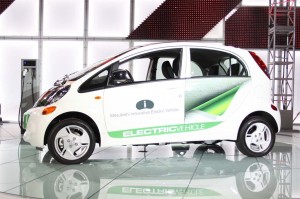The U.S. battery car market got off to a slow start last year. From the standpoint of a deficit-ridden Treasury, that’s probably the good news.
A quick run of the calculator suggests that the federal government provided about $135 million in subsidies during 2011 for purchasers of vehicles like the Nissan Leaf and Chevrolet Volt. And with sales likely to more than double this year, the hand-outs – in the form of federal tax credits – will also rise sharply.
In all, American motorists purchased about 18,000 battery-electric vehicles, plug-in hybrids and extended-range electric vehicles, or E-REVs, in 2011, and according to Edmunds.com, that works out to approximately $135 million when you consider that most of those vehicles qualified for the maximum $7,500 in tax credits. That figure does not include additional credits and rebates offered by more than a dozen states and some municipalities.
Nor does it factor in what Edmunds estimated to be $10 billion or so in subsidies and low-interest loans Washington has made available to manufacturers ranging from Nissan to Ford to start-up Tesla Motors to help promote the development of battery power.
The Obama Administration and other battery car proponents would like to raise the current credit to as much as $10,000 – though it’s a question whether that proposal can pass muster in a presidential election year. Backers also would like to raise the ceiling on the number of vehicles that could claim tax credits.
In 2011, the vast majority of the subsidies went to two products: the Nissan Leaf and Chevrolet Volt, though other vehicles including the Mitsubishi i, Wheego LiFe and Ford Transit Connect EV, also qualified.
Both Nissan and Chevrolet are planning on big growth this year, though it’s far from certain the market will go along. If the two makers alone hit their targets for 2012 the subsidies could grow to nearly $500 million, TheDetroitBureau.com estimates. And that doesn’t include payouts for a growing number of other battery-based vehicles.
Ford is slowly ramping up production of the new Focus Electric and will add a plug-in version of its new C-Max people mover, among other products. Toyota will have both a plug-in version of the Prius and a battery-electric RAV-4. Honda will join a long list of other makers when it launches the battery-powered Fit subcompact.
Under the current subsidy program, the exact amount of the subsidy is based on the size of a vehicle’s batteries, starting with a minimum 5 kilowatt-hours getting $2,500. The bigger the battery the larger the subsidy, up to that maximum $7,500.
But the law also has a phase-out clause designed to cut the giveaway if and when battery power starts moving into the mainstream. That would be triggered once a specific manufacturer has produced at least 200,000 qualified battery vehicles. Barring an unforeseen explosion in demand that isn’t likely to happen until much later in the decade.
The U.S. is actually not unique. Most major automotive markets, from Germany to China, offer buyers – and manufacturers – financial support to help charge up the battery car market. That comes in a variety of forms, including financing for public charging stations.
American battery-car backers contend that without such support the U.S. and its auto industry would likely slip behind countries like Germany and China that are aggressively aiming to dominate the future market for zero-emissions vehicles.

